The Magical Field of Magnets
” Hey guys! Look over here! My magnet sticks to the bike!”
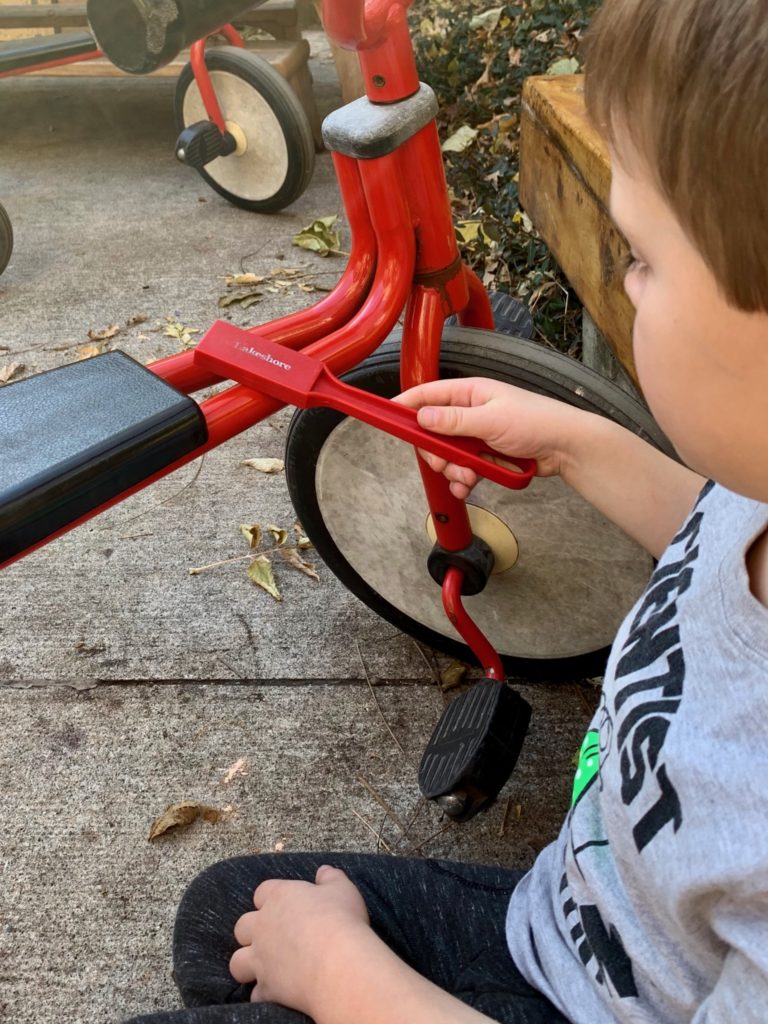
On this warm November morning, our magnetic wands have brought STEM learning to our outdoor classroom. By leaving the other magnetic materials behind, I am hoping to encourage the children to harness their curiosity and creativity for other forms of magnetic exploration. Opportunities like this allow children to learn independently, as well as collectively, as they explore on their own and then share what they have discovered with their fellow magnetic explorers.
This morning’s investigation introduces the children to scientific methods such as forming hypotheses, setting up experiments to test out their hypotheses, analyzing data and recording results. We have math exploration as they learn about spatial awareness, as well as math vocabulary building as they begin to understand and label concepts such as location and ordinal positioning—all in a morning of play with friends.
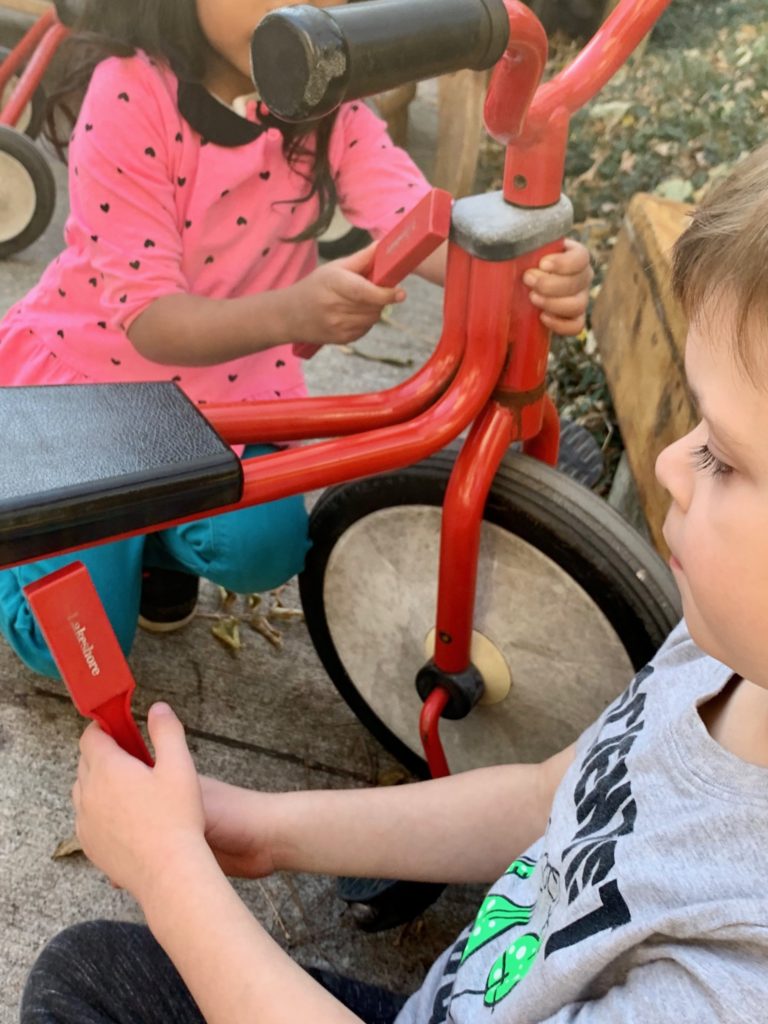
“Oh, wait! It sticks on the red part, but not on the black seat,” exclaims Harrison.
As the children race over to view Harrison’s latest discovery, I note with satisfaction that they have found their own way on this morning of STEM exploration.
“Why won’t it stick on the black seat, Harrison?” I ask.
“Because it’s not metal,” Harrison shares with the group.
“It’s not metal!” the other children repeat in a chorus of little voices. We are in that modeling stage of language this month. A comment made by one child is repeated by every child, like a group of enthusiastic parrots. This behavior has been making me a bit crazy lately. But, at this moment, I am grateful.
“Wait! This part is black but my magnet sticks here.” Harrison is thinking out loud, and his comment is met with silence as the other children test out his observation and come to the same conclusion.
“Wow, Harrison, I am confused. Why does your magnet stick on the black part there but not on the black seat or the black tires?” I ask.
“This black line is metal,” Harrison shares. “It is black metal.”
The other children parrot his response as the learning continues: “Yes! It is metal—black metal!”
Harrison continues to educate his peers. “The red part of the bike is metal and this black strip here is metal. The tires and the seat are not metal.”
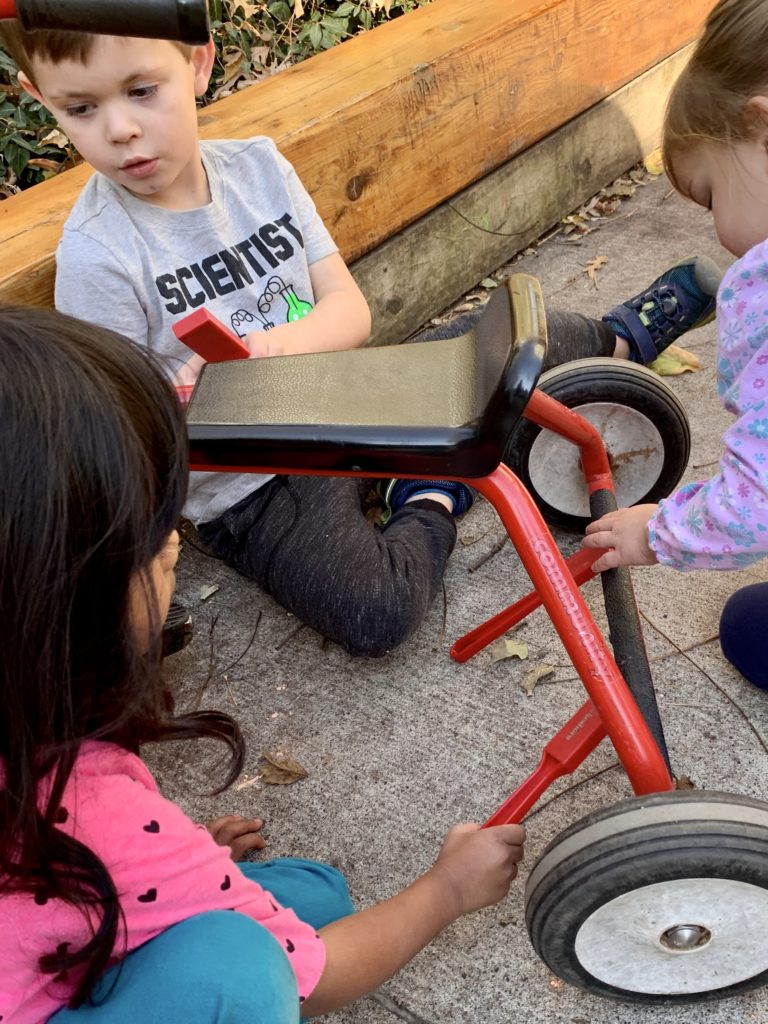
Soon, the magnetic exploration moves to the swings, which leads to another deep dive into STEM learning as the children use their wands to determine which parts of the swingset are magnetic and which are non-magnetic. It is also a great opportunity for us to document our research and meet more Illinois early learning benchmark standards.
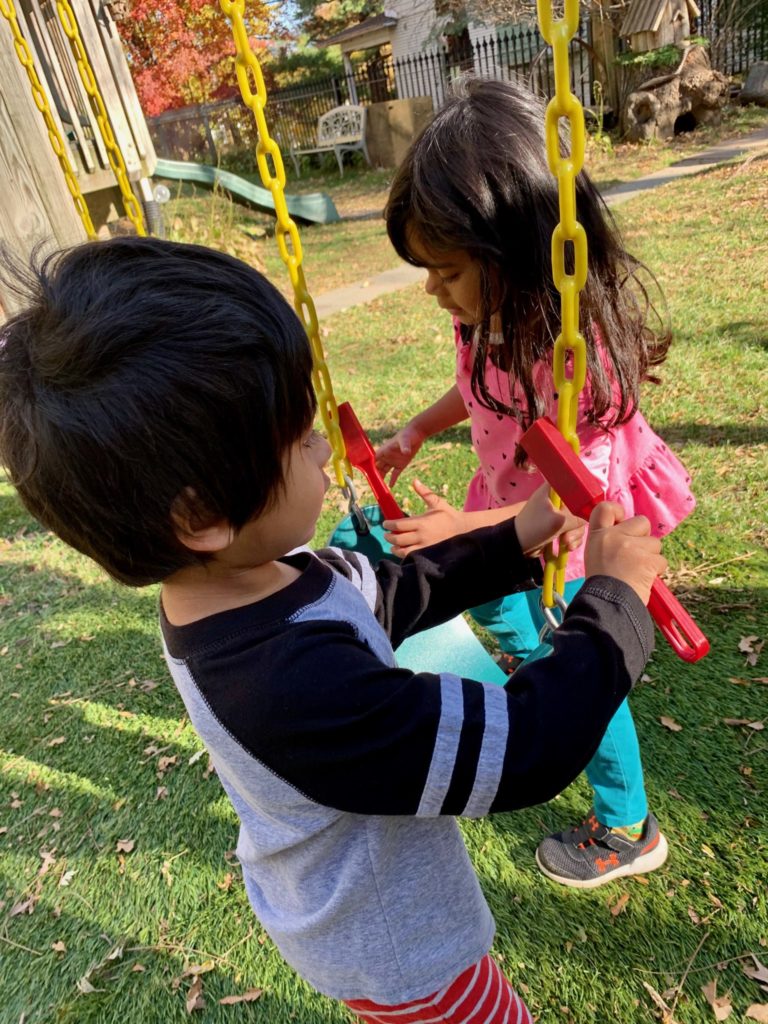
We use red and green tape to document our results. Magnetic surfaces are marked with green tape (go) and non-magnetic surfaces are marked with red tape (stop).
We could also record our findings on a clipboard, but this is a fun and visual way to document our data—and it is easier for the children to understand than checkmarks on a piece of paper.
This group doesn’t read yet—and drawing pictures would have slowed down the learning process. If you happen to have an artistic child who loves charts, this is a dream day for them. Make this child your research assistant!
I love it when children learn while moving, playing and sharing with friends.
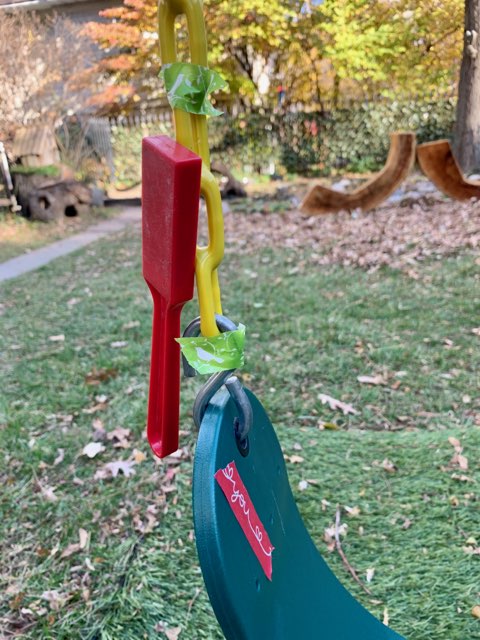
Experimenting with magnets encourages children to learn by exploring, observing and figuring out how things work. A longer period of time for discovery gives our students more opportunities to learn. I look over at the stump circle and see Eleanor quietly working her way through a solitary study of magnetic fields. Eleanor is deep in concentration as she studies and researches, collecting data and reanalyzing the magnetic poles and the attraction of the multiple magnetic wands.
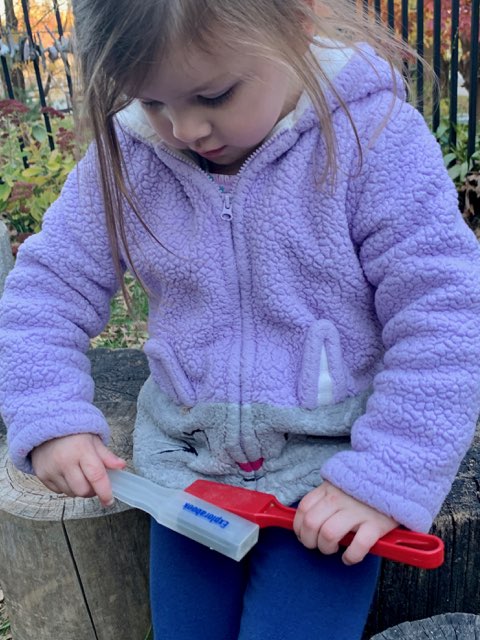
“It’s called a magnetic field,” I explain. Eleanor is working through her understanding and doesn’t look up from her investigation. I watch her speculate her way through different scenarios and then I try again.
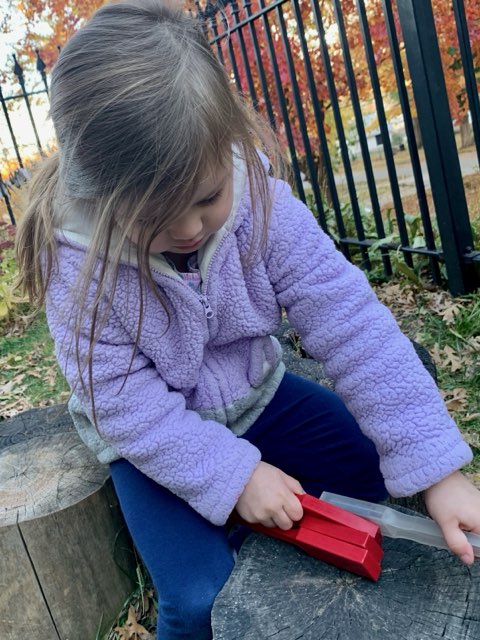
“It’s invisible!” I whisper, and Eleanor’s head pops up.
“Who doesn’t love invisible?” I continue to whisper: “It’s that invisible power called a magnetic field that is making your magnets push or pull each other. I love invisible.”
“It’s magic!” chirps Eleanor. “I can feel it pulling me!”
Eleanor smiles as she shares her understanding with me. It never gets old for me to observe the excitement and wonder that goes hand in hand with little brains making new connections and discoveries.
The next time you head outdoors with your students, grab the magnetic wands and let the invisible magic of magnetism lead them to a new understanding of magnetic forces and fields. If you’ve gone virtual this new year, magnetic play is a great way to get your little learners to venture out into their own backyards to get some fresh air and learn about magnetism through play.
Stay safe, my friends!
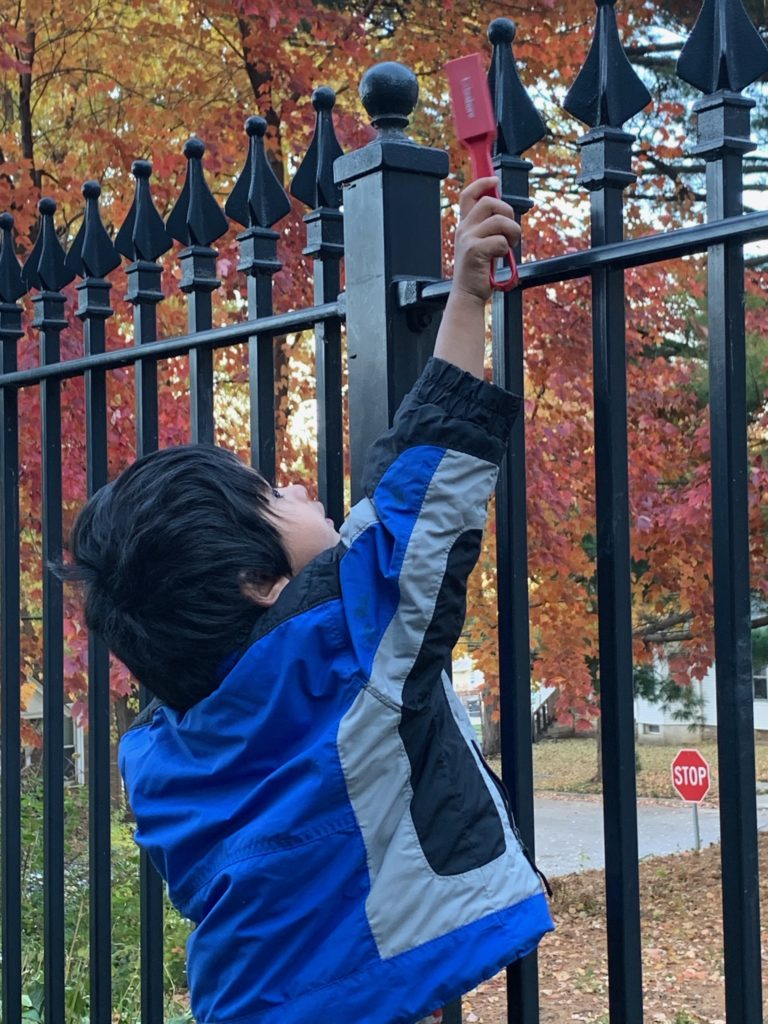
Love this idea
My students will love this